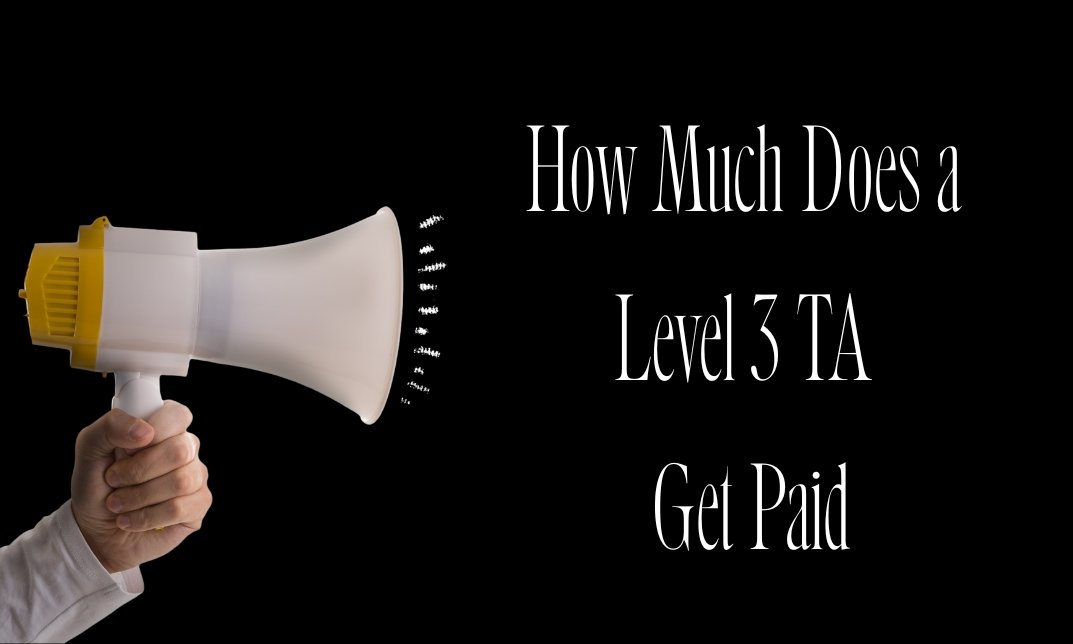No products in the cart.
You’ve heard of HLTA—but what exactly is it? In this post, we’ll explain what is a HLTA qualification, how you get it, and why it might be right for you.
A HLTA qualification shows that you’re an experienced teaching assistant who’s ready to step up. It’s not a course or an exam—it’s an assessment of the work you already do in the classroom. If you pass, you’ll be officially recognised as a Higher Level Teaching Assistant, with the chance to take on more responsibility, more independence, and possibly even better pay.
What is a HLTA Qualification? Your First Step Up
HLTA stands for Higher Level Teaching Assistant. It’s a recognised status in UK schools that shows you’re ready to take on more advanced tasks. While it’s not a separate job title, schools often link it to more pay and responsibility.
The HLTA qualification is not a course you pass with exams. Instead, it’s an assessment. You show evidence of your experience, knowledge, and impact in the classroom. If you pass, you become a recognised HLTA. It’s a formal step up from a regular teaching assistant role, and it’s backed by national standards.
This qualification is ideal for experienced TAs who want to lead parts of lessons, support pupils with complex needs, or cover for teachers occasionally. It’s a practical move that builds on what you already do in the classroom.
What Are the HLTA Qualification Prerequisites?
Before you apply, you need to meet a few important requirements. These make sure you’re ready for the HLTA assessment and can confidently show the standards in your day-to-day role.
Here’s what you’ll need:
- You must be working in a school. That includes mainstream or specialist settings. You don’t need to be full-time, but you do need to be active in the role now.
- You need backing from your headteacher or line manager. They must agree that you’re working at or near HLTA level already. They’ll also support your application and sign off your evidence.
- You must have Level 2 qualifications in English and maths. That usually means GCSEs at grade 4 (C) or above. If you don’t have those, you’ll need an equivalent, like Functional Skills Level 2.
- You must be able to meet all 33 HLTA standards. These cover things like planning learning, supporting pupil progress, working with teachers, and keeping children safe. You’ll show how you meet them during your assessment.
- You need regular contact with pupils. You should be actively leading or supporting learning activities—not just doing admin or playground duty.
Why Do Schools Value HLTAs?
Schools need skilled support staff more than ever. When a TA becomes an HLTA, they bring more to the table. They can support learning in deeper ways, lead small groups, and even cover classes during short-term teacher absence.
HLTAs also help reduce pressure on teachers. They step in when needed and often bring unique strengths, especially when it comes to building relationships with pupils. Some even specialise in subjects like literacy or maths.
Headteachers value HLTAs because they offer flexibility and depth. They know these staff members can manage pupils well, follow lesson plans, and still keep learning on track.
Who Can Become an HLTA?
This role suits people who already work as TAs and want to take on more responsibility. You’ll need to have some experience and confidence in the classroom.
To apply, you must meet a few basic requirements:
- Must already be working in a school setting.
- Need to be supported by your headteacher.
- Must have Level 2 qualifications in English and maths (or equivalent).
- Must be able to show you meet the 33 HLTA standards.
These standards cover areas like supporting learners, planning lessons with teachers, and managing pupil behaviour. If you’re already doing many of these tasks, you might be ready to take the next step.
What Does the HLTA Assessment Involve?
There’s no exam. Instead, you’ll go through a structured assessment process. First, you collect evidence that shows how you meet the HLTA standards. You write this up in a portfolio.
Next, a trained HLTA assessor will visit your school. They’ll observe your work, speak to you, and talk to your colleagues. They want to see that you can do the job—not just talk about it.
This visit is usually one day. If your evidence is strong and your practice matches the standards, you’ll pass. Most TAs find this process rewarding. It helps you reflect on your work and see how far you’ve come.
What Kinds of Tasks Do HLTAs Do?
HLTAs can do many of the things a regular TA does—but with added responsibility. Some lead small group sessions without a teacher in the room. Others support whole-class learning by working with targeted pupils.
Many HLTAs also:
- Help plan parts of lessons
- Deliver interventions
- Manage classroom behaviour
- Track pupil progress
- Cover classes during teacher absences (with prepared plans)
Some even take on pastoral duties or lead after-school clubs. In many schools, they’re seen as the bridge between TAs and teachers.
How Do You Prepare for HLTA Assessment?
Most candidates go through preparation training before their assessment. This helps you understand the standards and build your evidence. Training is often run by local authorities or specialist providers.
These courses usually last a few weeks. They don’t teach you how to be an HLTA—you’re already doing the work. Instead, they guide you in how to present your work clearly. You’ll write examples of your practice, collect feedback from colleagues, and reflect on your skills.
You’ll also learn how to link what you do to the national HLTA standards. This is key. It’s not enough to say you help pupils—you need to show how you do it and what impact it has.
What Support Will You Need?
You’ll need your school’s support to apply. Your headteacher must agree that you’re ready. They also need to sign off on your portfolio and support the assessment visit.
You might also want a mentor or colleague to guide you. Many candidates work with other TAs who’ve already passed. They can offer tips on building your portfolio and staying organised.
Time is also important. Writing your evidence and preparing for your assessment takes effort. Some schools give you protected time during the week to work on it. Others expect you to do it outside of your normal hours.
What Are the Benefits of Becoming an HLTA?
There are lots of positives. First, it’s a formal recognition of your skill and hard work. It proves you’re ready to take on more responsibility and contribute in bigger ways.
It can also lead to higher pay. Many schools link HLTA status to a higher pay band or extra hours. This varies by school, so check with your headteacher or HR lead.
But many HLTAs say the biggest benefit is confidence. Being assessed and recognised shows you’re making a difference. It can also open doors. Some use it as a step toward teacher training later on.
How Long Does It Take to Get HLTA Status?
The whole process usually takes a few months. After your school agrees to support you, you join a preparation course. That might last four to six weeks.
After that, you finish your portfolio and book your assessment. Once your visit is complete, results are usually sent within a few weeks.
In total, you could go from application to result in around three to four months. It depends on your schedule and how much time you can give to writing up your evidence.
Is HLTA the Right Path for You?
Not everyone wants to be a teacher. Some people love the support role and the close connection with pupils. If that sounds like you, HLTA could be your perfect next step.
It gives you the chance to grow without leaving the classroom. You’ll still work closely with pupils, but with more independence and input. You’ll also build stronger working ties with teachers and senior staff.
Before applying, think about your current role. Are you already leading small groups? Do teachers trust you to run sessions on your own? Are you confident with behaviour and learning support? If yes, you’re probably ready.
Where Can You Apply for HLTA Assessment?
You don’t apply directly to a central body. Instead, assessment providers work through regional centres or your local authority. Your school will often know who to contact.
Some of the key providers in England include:
- Best Practice Network
- Schools Direct
- Local authority training teams
Prices vary, but most assessments cost around £450 to £600. Sometimes schools pay for this. In other cases, staff use professional development funding. Always ask before you apply.
What Happens After You Pass?
Once you pass, you receive formal HLTA status. It’s recorded on the national HLTA register. You don’t need to renew it later—it stays with you as long as you stay in a school role.
You might then apply for an HLTA-linked post in your current school. Or you may simply take on more duties in your existing role. Either way, your career moves forward.
You can also use HLTA as a platform. Some staff go on to train as teachers. Others focus on becoming pastoral leads, behaviour mentors, or SEND specialists. It’s a flexible qualification that gives you options.
Final Thoughts
So—what is a HLTA qualification? It’s a recognised status for experienced teaching assistants who want to grow. It shows that you can take on more, lead learning, and make a deeper impact in schools.
You don’t need a degree. You don’t need years of extra study. But you do need confidence, experience, and the backing of your school.
If you’re ready to do more, HLTA is a solid first step. It boosts your skills, your pay, and your profile. More than that, it confirms what you’ve probably known for a while—you’re already doing great work. Now’s the time to make it official.
Thinking about HLTA status? Join our online HLTA course at Wise Campus and get the guidance you need to take that next step with confidence.







